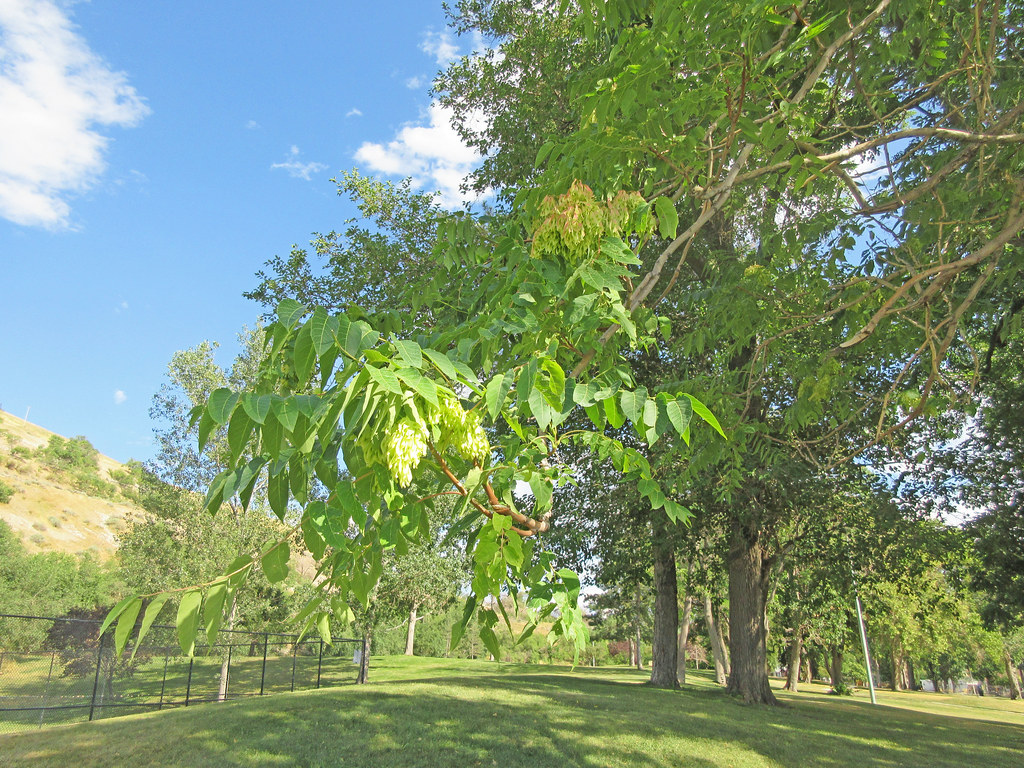It’s not often that you’re urged to kill a living thing, but that’s exactly what you are encouraged to do to the spotted lanternfly. “See it, squish it, report it.” That was the mantra of summers past, and the destructive bugs are back this year, despite New Yorkers’ best efforts to wipe them out.
Native to parts of Asia, the spotted lanternfly was first seen in the United States nearly a decade ago, when it was found at a Pennsylvania landscaping company that imported stones from abroad. It arrived in New York in the summer of 2020. In barely three years it has become a feared threat to the environment.
At this time of year, the spotted lanternfly is in its early nymph phase, which occurs right after hatching. The tiny black insects are dotted with white spots during this stage, before they develop their iconic gray and red coloring as adults in July.
The Department of Agriculture strongly encourages people to stomp, squash or swat lanternflies when they see them. Officials have been recruiting residents along the Eastern Seaboard to join the effort for years.
That’s because while spotted lanternflies are harmless to humans, they are an invasive species that can cause widespread economic and ecological harm, primarily by damaging plants.
Julie Urban, an evolutionary biologist in the entomology department at Penn State, has studied lanternflies for decades. She said that the state’s grapevines, a preferred food source for the spotted lanternfly, had been heavily affected, and that growers in Pennsylvania had recorded reduced yields since the bug’s arrival.
And the threat to New York’s much larger wine industry is even greater.
“The spotted lanternfly is knocking at the doors of vineyards in Long Island and the Finger Lakes region,” Urban said. “I’m concerned that if it does get into these vineyards, it’ll turn up the volume a notch or two in terms of economic impact.”
Bruce Murray, 67, is the owner of Boundary Breaks Vineyard near the Finger Lakes in Lodi, New York. He noted that spotted lanternflies had been seen in Ithaca, a mere 25 miles away, and said his growers were on the lookout for their arrival.
“Everybody’s hypervigilant about this, and we have been now for almost two years,” Murray said.

While it’s too early for Murray to break out the insecticide, he has been preparing by cutting down tree of heaven plants, an invasive species from China that lanternflies feed on, whenever he sees them.
This looming threat is not just a rural problem, it’s actually even in New York City.
Neal Weissman, 68, is the president of the Roosevelt Island Garden Club and helps oversee the Manhattan neighborhood’s large community garden.
A member of the garden’s pest mitigation committee, he wanders between plots wielding a hand-held vacuum, sucking up any lanternfly nymphs he comes across, in hopes of keeping the population at bay.
The daily vacuuming, Weissman said, “has started giving me nightmares.” He said he had noticed an “exponential” increase in lanternflies, and that his traps have been catching the same number in a single hour as they did in an entire weekend last year.
Grape growers on Roosevelt Island, which is in the East River, are already seeing a decline in plant health this season, with some gardeners removing their vines entirely to help curb the bug’s spread.
Pia Doane, 77, has been gardening on Roosevelt Island for over 30 years. Doane swears by a plant-oil-based spray called Gronnsape to attack the bug: a cleaner that, like her, comes from Scandinavia.
Still, her languishing Champagne grapevines are infested with lanternflies, and she’s contemplating throwing in the towel and giving up on grapes altogether this year. “My poor grapevines,” Doane said. “It’s very frustrating.”
Do lanternflies really need to die? Some people are loath to kill them because they are so pretty, but sometimes beauty can be deadly, as in this case.
Those hesitant to kill lanternflies need to keep in mind that the choice is either squash or spread, experts say. So, go ahead and stomp and squash without mercy.










